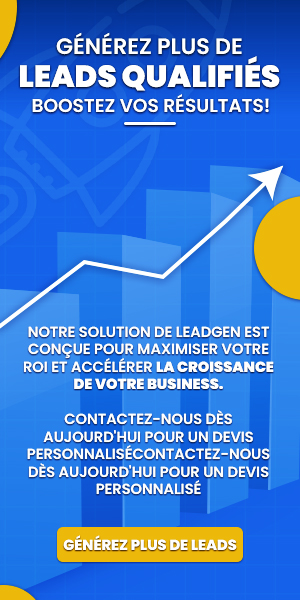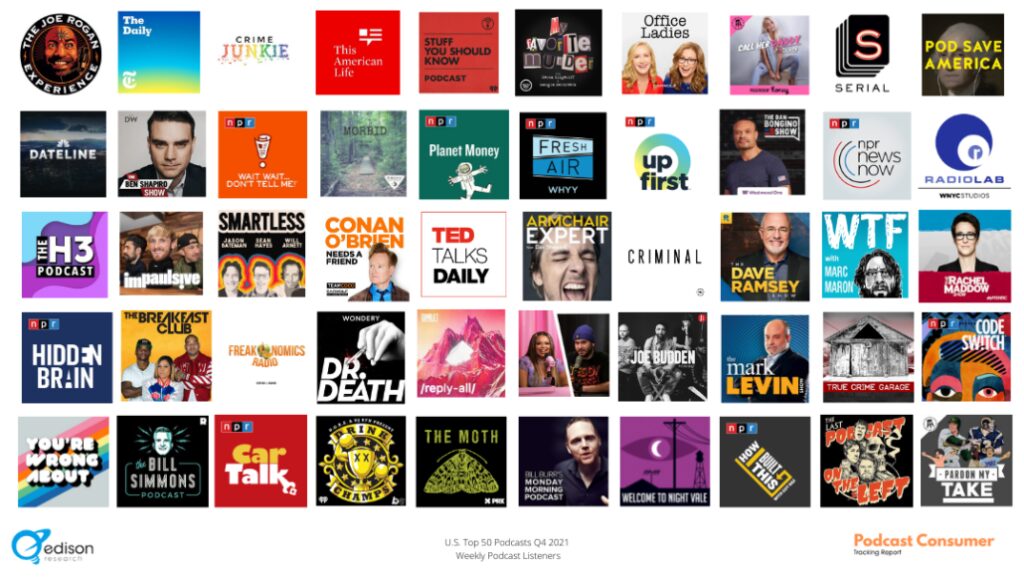In an increasingly competitive digital environment, converting visitors into customers is a major challenge for many businesses. To succeed in this conversion, it is essential to adopt adapted techniques that meet the expectations and needs of prospects. This not only involves creating engaging and relevant content, but also optimizing every step of the customer journey. Understanding conversion levers, such as marketing automation, lead nurturing and data analysis, is essential to maximize the chances of conversion and, therefore, strengthen the growth of your business. In this article, we’ll explore the most effective techniques for turning your visitors into customers, while highlighting the importance of a customer-centric approach.
Table des matières
ToggleEssential Techniques to Improve Conversion

As part of the transformation of visitors in customers, several conversion techniques prove to be particularly effective. Here are some of the most essential ones.
The first step is to optimize the landing page. Make sure your homepage is clear, with a concise and compelling message. Good design, visible calls to action (CTAs), and fast loading times are crucial to capturing your visitors’ attention as soon as they arrive.
It is also important to use customer testimonials and case studies. Social proof reassures prospects and encourages them to take action. Include positive reviews and feedback on your products or services to build their trust.
Personalization of emails and offers plays a major role in the conversion process. Send messages tailored to each segment of your audience. Use automation tools to manage and analyze prospect interactions, so you can adjust your communications accordingly.
Suggest limited offers over time can also encourage purchases. Creating a sense of urgency or scarcity motivates prospects to act quickly, thereby reducing cart abandonment.
Don’t overlook the importance of valuable content. Create blog posts, of the webinars or guides informative that answers the questions and needs of your target audience. Relevant content attracts qualified visitors and drives organic traffic to your site.
Finally, the analysis of data is essential to understanding your audience. Track the performance of your different conversion initiatives and adjust your strategies based on the results. Use analytics tools to gain precise insights into user behavior.
Funnel Optimization
For transform your visitors into customers, it is essential to optimize each step of their journey. L’conversion funnel, which guides a user from the first interaction to the final purchase, plays a vital role in this process. Its optimization helps identify and eliminate friction points, thereby maximizing conversion potential.
The first step is to clarify your value proposition. The message conveyed by your site must be clear and relevant, responding directly to the needs of your visitors. Make sure the added value of your products or services stands out immediately.
Then focus on theuser experience. An intuitive, fast and aesthetically pleasing site retains the attention of visitors. Opt for a clear architecture and visible CTAs (Call To Action) to guide users towards the desired actions.
It is also crucial to put in place testimonials and customer reviews. Incorporating positive reviews from existing customers builds credibility for your brand and helps new visitors make an informed decision.
The campaigns of lead nurturing helps keep visitors engaged, even if they’re not ready to buy immediately. Sending targeted emails with relevant content can significantly improve conversion rates in the long term.
L’analytical is also a strategic asset. Tracking user behavior on your site gives you valuable insights into their journey, allowing you to adjust your efforts accordingly. Use tracking tools to analyze the most visited pages and abandonment rates at each stage.
Finally, don’t forget to implement A/B testing. Testing different versions of landing pages or messages can reveal insights into what works best for your audience. It’s essential to take a data-driven approach to maximize the effectiveness of your conversion efforts.
Effective use of calls to action
The transformation of visitors into customers relies on several conversion techniques key, among which the effective use of calls to action (CTAs) is paramount. A well-designed CTA can encourage users to take the desired action, whether that’s signing up for a newsletter, requesting a quote, or making a purchase.
It is crucial to pay particular attention to the wording and visibility of CTAs. Here are some tips for optimizing them:
- Clarity : The message should be simple and straightforward, leaving little room for ambiguity about what the user is supposed to do.
- Contrast : Make sure the buttons stand out from the rest of the page, both in color and layout.
- Emergency : Encourage users to act quickly by using phrases like “Limited offer” or “Sign up now”.
- Relevance : The CTA should be consistent with the content it came from, ensuring that the user feels like they made a good choice.
At the same time, optimizing your website also plays a crucial role in the conversion process. A smooth user experience, combined with an intuitive design, will keep visitors’ attention. It is recommended to:
- Have fast loading times to avoid losing impatient users.
- Use customer testimonials and case studies to build credibility and encourage trust.
- Offer quality content that addresses visitors’ concerns and needs, thereby facilitating their purchasing journey.
Finally, using data analysis tools allows you to evaluate the performance of your conversion techniques. By monitoring user behavior on your site, it becomes possible to continually adjust your strategies, identify friction points, and adapt content accordingly. Analyzing data gives you the keys to perfecting your practices and improving the conversion rate.
Role of personalization in conversion
Personalization plays a crucial role in the process of converting visitors into customers. By tailoring your messages, content and offers based on the specific needs and behaviors of your prospects, you create a more engaging and relevant experience. Personalization helps increase user interest and trust in your brand.
There are several personalization strategies to consider:
- Audience Segmentation : Divide your visitors into groups based on demographic, behavioral or psychographic criteria. This allows you to target specific messages to subsets of your audience.
- Dynamic content : Use content that adapts in real time based on the user’s previous interactions with your site. For example, recommend products based on pages visited.
- Personalized email marketing : Send emails that directly respond to users’ interests and purchasing behaviors. This may include special offers for products they have previously viewed.
- User experiences on the site : Change the navigation and calls to action based on the preferences displayed by the user. A personalized interface can significantly increase the chances of conversion.
By integrating these personalization techniques, you allow your marketing to be not only more targeted but also significantly more effective. Your messages are thus better perceived, increasing interactions and, therefore, the overall conversion rate. Don’t forget to regularly analyze the results to refine your approaches and maximize your impact.
By applying a strategy of effective personalization, you transform your visits into an enriching and tailor-made customer journey, conducive to conversion.
Analysis of customer data for a better experience
There personalization plays a crucial role in optimizing conversion rates. By tailoring content and offers to visitor preferences and behaviors, businesses can create a more engaging experience that drives action.
Customer data is a wealth of information allowing us to better understand their expectations. The analysis of this data can be done using several methods:
- Use of data analysis solutions to track user behavior across different channels.
- Customer segmentation based on specific criteria such as age, interests and purchasing behavior.
- Identifying friction points in the customer journey using user experience analysis tools.
By collecting this information, businesses can adjust their communications strategy to more directly meet the needs of their visitors. For example, personalized product recommendations or tailored content can significantly increase engagement.
In order to maximize the potential of personalization, it is essential to integrate solutionsautomation which allow you to send targeted messages based on user interactions. This includes:
- Personalized email campaigns based on past behavior.
- Special offers for loyal customers, based on purchase history.
- Sending relevant content based on preferences displayed by users.
Invest in tools adapted to the personalization and data analysis is essential to transform an occasional visitor into a regular customer. The combination of deep customer understanding and advanced technology solutions creates an environment conducive to increasing conversions.
Targeted Marketing Strategies
In an increasingly competitive digital environment, personalization plays a crucial role in converting visitors into customers. Adapting messages and offers based on user characteristics and behaviors helps increase their engagement and encourage decision-making.
Implementation of strategies targeted marketing is essential to maximize the impact of personalization. Here are some techniques to consider:
- Audience segmentation : Analyze demographic, behavioral and psychographic data to segment your visitors into homogeneous groups.
- Content personalization : Offer content adapted to the specific needs of each group, such as articles, videos or promotional offers.
- Using Email Marketing : Design tailored email campaigns that respond to user interests and behaviors, using product recommendations or event notifications.
- A/B testing : Test different variations of your landing and call-to-action pages to identify which ones generate the most conversions.
By integrating these targeted marketing practices, companies can not only increase the relevance of interactions with their visitors, but also significantly improve the conversion rate. The key lies in the collection of qualitative and quantitative data, allowing the approaches used to be continuously refined.
Adopt an approach of nurturing is also essential. By maintaining regular contact with prospects, thanks to content adapted to each stage of their purchasing journey, companies can build a relationship of trust. This increases the likelihood that these prospects will turn into loyal customers.
Finally, the use of toolsautomation helps track visitor interaction effectively, providing valuable insights to optimize marketing and conversion efforts. By automating certain tasks, you save time while improving the effectiveness of your campaigns.














